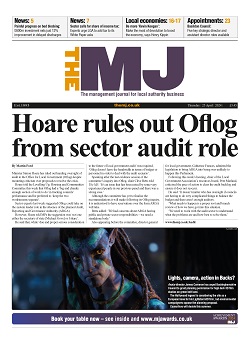Why do councils fail? It’s the leadership, stupid!
Councils shouldn’t fail. They are built to withstand seismic shifts in demand and political leadership. They are broadly self-regulating organisations. And, they have several fail-safe mechanisms: scrutiny, internal challenge, good officers, conscientious members, the local media and the beady eye of the government. Yet, still they fail.
Leadership shortcomings, usually starting at the top, pollute the culture and enable failure. It begins by letting little things go, things that should be picked up and dealt with.
They are easy to see if you are looking for them: key decisions being made behind closed doors without the right people present; failing to take minutes and keep proper records; giving members insufficient time or information to make informed decisions; mismanagement and hiding mismanagement; exerting undue influence over individuals to exclude key information; preventing officers and others from giving robust, unwelcome, but necessary advice.
Three people can do more than most to prevent failure: the chief executive, the section 151 officer and the monitoring officer. It is their job to know about things that could go wrong and to act. Many do not.
Some chief executives say they would do more if they had powers to strengthen their hand. Those who say this probably don’t understand their job and the extent of power and influence they should already have.
Some, though, don’t even know they are getting things wrong. This may be due to incompetence, a lack of relevant experience, or just magical thinking.
They may not have been exposed to excellence. So they eschew the advice of those who know better and will offer free advice. Instead, they will put together small circles of trusted people who will create a bubble wherein they can live.
But those who recognise their challenges, who face up to their shortcomings, who challenge their own practice and seek advice early will help their organisations avoid failure – and become better leaders.
Failure is not invisible. The signs are palpable. Watch people in a leadership meeting and check out the distraction, the eye-rolling, the blank stares, the lack of coherence, the skirting around hard questions. Look for inconsistencies in behaviour and values. Note how uncomfortable truths are parked and helpful narratives are created, nurtured and spread.
But talk to those who are living with this every day and they can see impending disaster. They say as much to inspectors who are forced to intervene. Fear prevents them from acting beforehand. They know their bright prospects could be dashed by being portrayed as unhelpful – or worse – being bullied or vilified and drummed out of the organisation. The best leave. Those who remain hunker down and pray for change.
First, leaders know the core of their success depends upon being credible. Their commitment to doing the day job, ensuring brilliant local services that meet local needs, is uppermost. It is what will earn them as much respect in the members’ corridors as it will in the organisation. Their credibility is founded on self-awareness, competence and humility – knowing that they can always be better. They know what excellence looks like. And if they are not sure, they talk to those that do.
Second, they develop strong relationships, not only with the current leadership, but with all members. They understand members. Chief executives are well-placed. As returning officers they see would-be members from day one and make it their business to be useful, offering advice, suggesting ideas and providing legitimate routes to market for emerging schemes.
Strong relationships and brilliant inter-personal communication enables them to nudge decision-makers away from danger, to persuade them to drop outlandish and questionable things. They subtly tell truth to power.
Third, they know what is going on. They are kept abreast of developments by people who trust their judgement and seek their advice. They can see emerging patterns that spell trouble. They read the runes.
Fourth, they constantly challenge themselves to be better. They will seek advice early and listen to it, often from accomplished peers, when they are uncertain. They will routinely review practice – successes and failures – to look for and find improvements. They will promote and embody a culture of accountability and own up to their own errors.
Finally, good leaders lead by example. They embody a culture of excellence and accountability. They encourage innovation but are clear about standards, rules, policies and protocols. They do not espouse the move-fast-and-break-things philosophy. They demonstrate high standards and insist on adherence. They exert influence by being. And their leadership teams emulate their approach, spreading excellence by osmosis.
Things go awry when people are compromised, lose their confidence or are undermined by lesser beings. When this starts to happen, they opt for lines of least resistance. They let little things go, often out of fear of upsetting key people. Good leaders don’t let this happen.
How to avoid failure: The MJ insider’s guide will be published later this year, available to The MJ subscribers. To subscribe now, go to https://subscribe.themj.co.uk



